Choosing the right golf ball is essential for improving your performance on the course. With various choices accessible, pursuing an educated choice can overpower. This comprehensive guide on How to Choose Golf Balls will help you understand the key factors to consider, ensuring you find the perfect ball tailored to your game.
Table of Contents
Understanding Golf Ball Construction
Before diving into specific types of golf balls, it’s essential to understand their construction. Golf balls generally consist of three main components: the core, the cover, and the layers in between.
- The Core: The core is the innermost part of the ball and significantly influences its distance and feel. It is typically made from rubber or synthetic materials. Cores can be:
- Solid Core: Provides greater distance and durability.
- Multi-layer Core: Offers a balance of distance, spin, and control.
- The Cover: The outer layer impacts the ball’s durability and control. Common materials include:
- Surlyn: Durable and provides less spin, suitable for beginners.
- Urethane: Softer and offers more spin, preferred by advanced players for better control.
- Layers: Golf balls can have multiple layers, affecting their performance characteristics:
- Two-piece Balls: Have a solid core and a cover. They are durable and provide greater distance.
- Multi-layer Balls: Include additional layers between the core and the cover, enhancing spin and control.
Types of Golf Balls
- Distance Balls: Designed for maximum distance, these balls have a solid core and a durable cover. They minimize spin, helping players hit longer and straighter shots.
- Spin Control Balls: These balls feature a softer cover, often made of urethane, to enhance spin control. Ideal for advanced players who need precision on approach shots and around the greens.
- Tour Performance Balls: High-end balls used by professional golfers. They offer a balance of distance, spin, and control, often featuring multi-layer construction and urethane covers.
- Soft Feel Balls: Provide a softer feel upon impact, which can enhance control and comfort. They are popular among players with slower swing speeds.
- Ladies’ Golf Balls: Specifically designed for female golfers, these balls often feature softer cores and covers to accommodate slower swing speeds.
- Practice Balls: Durable and inexpensive, these are ideal for driving ranges and practice sessions.
How to Choose Golf Balls and Things to Consider When Picking Ball
Skill Level
- Beginners: Should opt for two-piece distance balls for their durability and distance.
- Intermediate Players: Might prefer multi-layer balls that offer a balance between distance and control.
- Advanced Players: Often choose tour performance balls for their superior spin and control.
Swing Speed
- Low Swing Speed (< 90 mph): Softer balls with lower compression can maximize distance and control. Medium Swing Speed (90-105 mph): Balanced balls with medium compression are suitable. High Swing Speed (> 105 mph): High-compression balls help in achieving optimal distance and control.
Playing Style
- Distance Seekers: Should choose distance balls that offer low spin off the driver.
- Control and Spin Enthusiasts: Should opt for spin control or tour performance balls.
Course Conditions
- Harder Greens: Require balls with higher spin for better stopping power.
- Softer Greens: Allow for lower-spin balls, enhancing distance without sacrificing control.
Weather Conditions
- Windy Conditions: Lower spin balls help maintain control and reduce the impact of wind.
- Cold Weather: Softer balls with lower compression are more effective as they compress better in cold temperatures.
Evaluating Golf Ball Performance
- Distance: The primary consideration for many golfers, distance is influenced by the ball’s core and cover material. Distance balls are engineered to minimize spin and maximize speed off the tee.
- Spin: Spin rates are crucial for control and stopping power, especially on approach shots and around the greens. High-spin balls offer better control but can be harder to manage for less experienced players.
- Feel: The feel of a golf ball is subjective but generally refers to how the ball feels at impact. Softer balls offer a more responsive feel, which can aid in control and precision.
- Durability: Durability is essential for cost-effectiveness and performance consistency. Surlyn-covered balls are generally more durable than urethane-covered balls.
Testing and Comparing Golf Balls
To determine the best golf ball for your game, conduct on-course testing and compare different models. Here’s a step-by-step approach:
- Identify Your Priorities: Decide whether distance, spin, or feel is most important to you.
- Test on the Course: Play a few rounds with different balls, focusing on how they perform in various situations.
- Evaluate Your Performance: Take note of your scores, shot consistency, and how each ball feels during play.
- Seek Professional Advice: Consult with a golf pro or use launch monitor data for more precise measurements of ball performance.
Popular Golf Ball Brands
A few brands are famous for their quality and execution. Here are a few to consider:
- Titleist: Known for their Pro V1 and Pro V1x models, favored by many tour players.
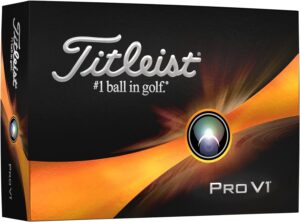
- Callaway: Offers a range of balls like the Chrome Soft and SuperSoft, catering to different skill levels.
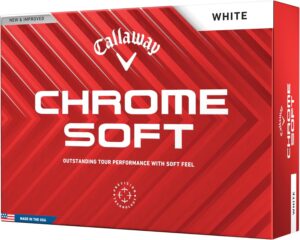
- TaylorMade: Known for their TP5 and TP5x models, which provide excellent distance and spin control.
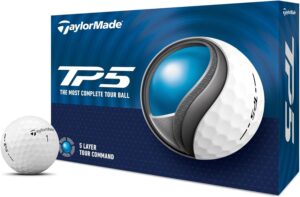
- Bridgestone: Offers the popular Tour B series, known for their innovative core and cover technology.
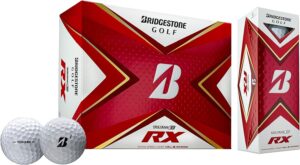
- Srixon: Produces a variety of balls like the Z-Star, which balances distance and spin.
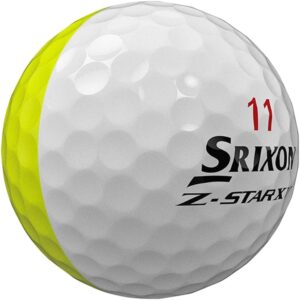
Environmental Impact and Sustainability
As golfers become more environmentally conscious, choosing eco-friendly golf balls is increasingly important. Some manufacturers now offer biodegradable balls or those made from recycled materials.
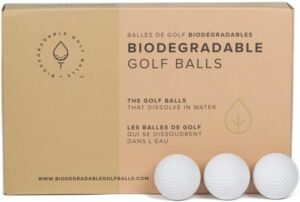
Frequently Asked Questions (FAQ)
How frequently would it be advisable for me to change my golf ball?
The frequency with which you should change your golf ball depends on several factors, including the ball’s durability and how often you play. Generally, if you notice significant scuffs or damage to the ball, it’s time to replace it. Some golfers change balls every few rounds, while others prefer to use a new ball each time they play.
Does the brand of the golf ball really matter?
Yes, the brand can matter because different manufacturers use varying technologies and materials that can impact the ball’s performance. Some brands are known for distance, while others might be preferred for control and feel. It’s essential to try a few different brands to see which one best suits your game.
What’s the difference between high-compression and low-compression golf balls?
High-compression golf balls are harder and generally better for players with fast swing speeds, as they can compress the ball properly to maximize distance. Low-compression balls are softer, making them ideal for players with slower swing speeds, as they are easier to compress and can offer more distance and a softer feel.
Are there specific golf balls for beginners?
Yes, beginners often benefit from using two-piece distance balls because they are more durable and provide longer distances. These balls typically have a solid core and a cover that helps minimize spin, which can aid in hitting straighter shots.
How does weather affect golf ball performance?
Weather can significantly affect golf ball performance. In cold weather, balls tend to become harder and less responsive, so using a softer, low-compression ball can help. In windy conditions, low-spin balls are preferable as they are less affected by the wind. Hot weather can make balls more responsive and travel further.
Can using the wrong golf ball affect my game?
Absolutely. Using a ball that doesn’t match your skill level, swing speed, or playing style can negatively impact your performance. For example, a high-spin ball might not be suitable for a beginner who struggles with control, while a low-compression ball might not provide enough distance for a player with a fast swing speed.
How can I test different golf balls to find the best one for me?
Conduct on-course testing by playing a few rounds with different types of balls. Pay attention to how each ball performs in terms of distance, control, spin, and feel. Additionally, you can use launch monitors or seek professional fitting services to get precise measurements and recommendations.
Are there environmentally friendly golf balls?
Yes, some manufacturers produce environmentally friendly golf balls made from biodegradable materials or recycled components. These balls are designed to minimize environmental impact while still providing good performance.
Conclusion
Choosing the right golf ball can fundamentally influence your game. By understanding the construction, types, and key performance factors, you can make an informed decision tailored to your skill level, swing speed, and playing style. Remember to test various balls on the course and seek professional advice to fine-tune your choice. With the right golf ball, you’ll be better equipped to improve your performance and enjoy the game even more.
